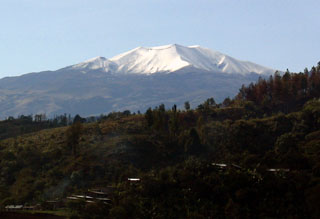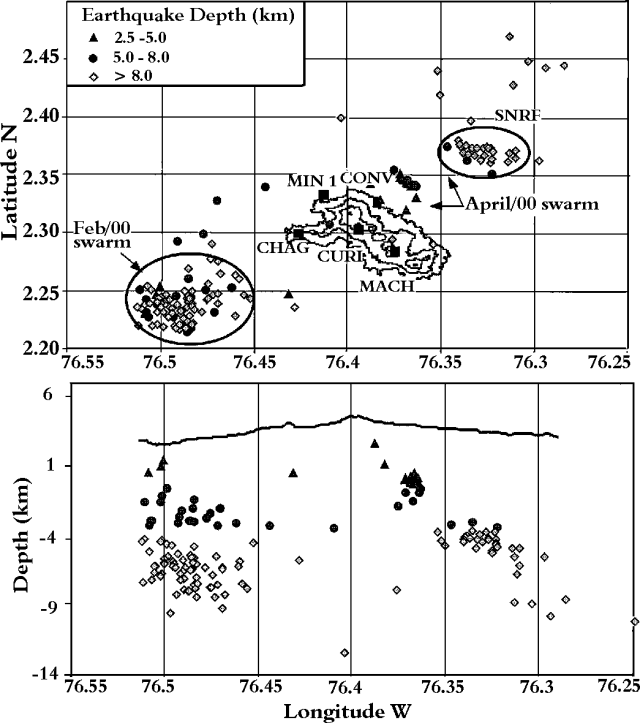Report on Purace (Colombia) — May 2000
Bulletin of the Global Volcanism Network, vol. 25, no. 5 (May 2000)
Managing Editor: Richard Wunderman.
Purace (Colombia) Anomalous February-April earthquakes and banded tremor
Please cite this report as:
Global Volcanism Program, 2000. Report on Purace (Colombia) (Wunderman, R., ed.). Bulletin of the Global Volcanism Network, 25:5. Smithsonian Institution. https://doi.org/10.5479/si.GVP.BGVN200005-351060
Purace
Colombia
2.32°N, 76.4°W; summit elev. 4650 m
All times are local (unless otherwise noted)
Puracé has been seismically monitored since 1989; during February-April 2000 some anomalous seismicity occurred. First, on 2 February a MR 4.7 tectonic earthquake and some volcano-tectonic (VT) earthquakes struck with epicenters near the town of Paispamba almost 15 km SW of the volcano. Next, a swarm consisting of 32 earthquakes occurred with M 0.0 to M 1.5; these events took place during 2-3 February; depths were at 7-9 km, and their magnitudes were over 1.5. Subsequently they migrated to the SE, ending on 21-22 April with 53 earthquakes in a cluster located 4.5 km NE of the volcano at depths of 2.5-8 km. A synopsis of the epicenter data appears in figure 1.
Geological Summary. Puracé in Colombia consists of an andesitic stratovolcano with a 500-m-wide summit crater constructed over a dacitic shield volcano. It lies at the NW end of a volcanic massif opposite Pan de Azúcar stratovolcano, 6 km SE. A NW-SE-trending group of seven cones and craters, Los Coconucos, lies between the two larger edifices. Frequent explosive eruptions in the 19th and 20th centuries have modified the morphology of the summit crater. The largest eruptions occurred in 1849, 1869, and 1885.
Information Contacts: Fabiola Rodríguez and Jaime Raigosa, Observatorio Vulcanológico y Sismológico de Popayán, INGEOMINAS, Popayán, Colombia; Hector Cepeda, INGEOMINAS, Bogotá, Colombia.


